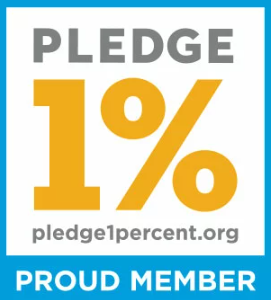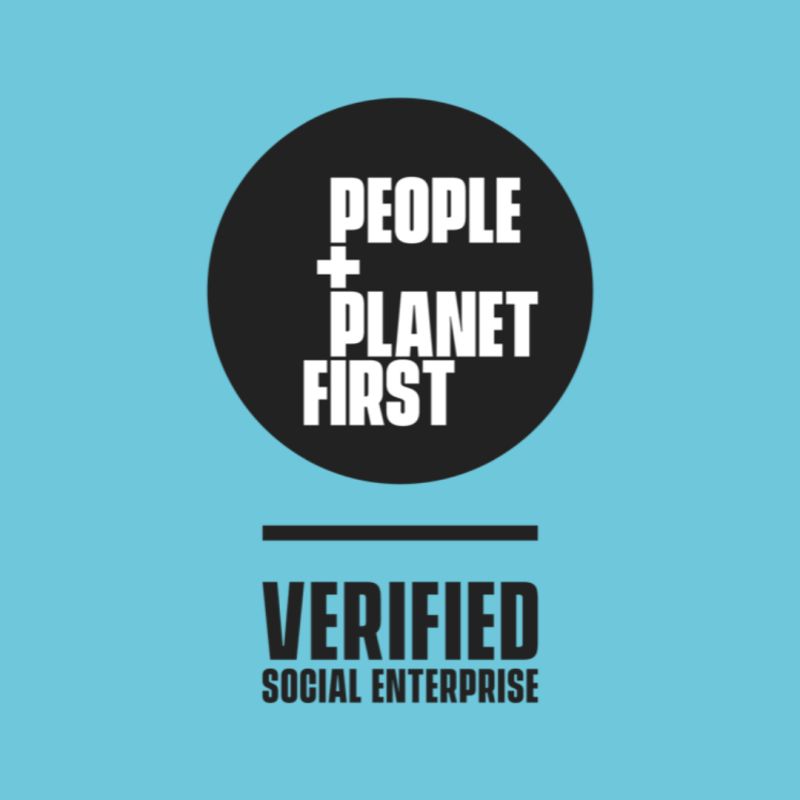
Finding Peace Under Pressure – (Leading Beyond Fear Part 3)
For vitality, I did the unthinkable from my former hustle and grinder self. I took 3 days off at a meditation retreat a few days before the event. I felt so refreshed coming back.
My daily 2 hour meditation practice did wane down to an hour (didn’t beat myself up though) and I did have some super late nighters (I swear its my ADHD), but overall, I kept up on continuing my workouts, eating well, and not working harder when I needed rest.
So instead of being a hot, frantic mess days before the event, there was ease. Those two words “event” and “ease” were never in the same sentence before.

3 Ways to Train Your Brain for Equanimity (Lead Beyond Fear Part 2/3)
For vitality, I did the unthinkable from my former hustle and grinder self. I took 3 days off at a meditation retreat a few days before the event. I felt so refreshed coming back.
My daily 2 hour meditation practice did wane down to an hour (didn’t beat myself up though) and I did have some super late nighters (I swear its my ADHD), but overall, I kept up on continuing my workouts, eating well, and not working harder when I needed rest.
So instead of being a hot, frantic mess days before the event, there was ease. Those two words “event” and “ease” were never in the same sentence before.

Lead Beyond Fear: Without Burning Out
For vitality, I did the unthinkable from my former hustle and grinder self. I took 3 days off at a meditation retreat a few days before the event. I felt so refreshed coming back.
My daily 2 hour meditation practice did wane down to an hour (didn’t beat myself up though) and I did have some super late nighters (I swear its my ADHD), but overall, I kept up on continuing my workouts, eating well, and not working harder when I needed rest.
So instead of being a hot, frantic mess days before the event, there was ease. Those two words “event” and “ease” were never in the same sentence before.

Master Relaxation to Perform Higher
For vitality, I did the unthinkable from my former hustle and grinder self. I took 3 days off at a meditation retreat a few days before the event. I felt so refreshed coming back.
My daily 2 hour meditation practice did wane down to an hour (didn’t beat myself up though) and I did have some super late nighters (I swear its my ADHD), but overall, I kept up on continuing my workouts, eating well, and not working harder when I needed rest.
So instead of being a hot, frantic mess days before the event, there was ease. Those two words “event” and “ease” were never in the same sentence before.

3 Secrets to Success: Staying in the Zone
Ever notice how when you’re in the zone, you can accomplish anything? But how do you turn on that “flow” like a button?
Here are 3 Secrets of Success to Stay “In the Zone”
1. Music
Nothing unblocks the brain better than syncing brain waves with music. When I need to focus, I put on baroque music.
Frederic Patenaude writes how Baroque music, such as that composed by Bach, Handel or Telemann, creates an atmosphere of focus that leads your brain into deep concentration in the alpha brain wave state. Learning, memorizing, or reading to this music is highly effective.
On the flip side of cultivating more quiet focused “yin energy”, if you’ve got more yang energy, try dance music. When I’m feeling scattered, I play Eye of the Tiger or something to get me super pumped and clear out that yang energy. I have a dance playlist I bust out if need be!
Scientifically, getting blood and oxygen flowing to your brain better circulates any blocked toxins or energy in your system. It allow your nervous system to flip from a fight or flight sympathetic mode to the “rest and digest” parasympathetic mode where you more easily focus and get stuff done!
Action: Create a dance playlist that will get you pumped up and ready to go! If that occurs as hard, then simply pick a few of your favorite songs. On my google play, I have a radio station for baroque and a playlist for dance music. Now with online stations like Google Play, Pandora, or Spotify–you can create a playlist in seconds.
2. Morning Ritual
As your brain wakes up from sleeping, the first (and last) 30 minutes of your day have a more powerful impact than any other time of the day. Why? Because by default, your brain generally wakes up in the alpha wave state–the optimum state for focus, relaxation, and creativity.
I have tested this concept for years purposefully starting off with what I know I shouldn’t like work email, facebook feeds, and responding to app notifications. Then I compare those days with other days where I start with exercise, reading spiritual or business books, or mindful eating. My ritual varies over the weeks, but typically go through 30 day sprints of different rituals depending on what my body and soul needs.
The result of my testing? I’ve discovered what works best is a minimum of 1 hour of spiritual time with myself first before I eat or work. I’m the only person I’ll ever end up always being with as long as I live, so it’s important to make time for myself first and cultivate my relationship with my soul (or true self, source, higher power, god, universe–whatever name fits best for you!)
Action: Test what works best for you! Track it each day for at least 1 week, but ideally 3-4 weeks to see your patterns. Then notice how whatever morning activity you picked, plays out on your performance and productivity for the rest of the day.
Warning! Watch out for 2 night time temptations that will serious impact your morning ritual. (Remember, your morning ritual really begins at night so be sure to create your bedtime ritual as well.) Those 2 nighttime temptations are:
- Screen time: I have the program Flux installed on all my computers that naturally mimics the sun in my computer screen, taking away blue light (that keeps your brain active instead of slowing down to alpha waves with the fall of nighttime). So if I’m accidentally on my laptop later at night, I’m still able to get sleep without any blue light trying to trick my brain to staying up.
- Eating: It takes 2 hours for your tummy to digest food. I always make sure to eat any last snacks or food at least 2 hours prior to bedtime
If I simply follow good habits for screen time and eating before my bedtime between 9:30 pm – 9:45 pm, I pop up with lots of energy between 5:30 am – 6am. That’s right, no coffee, no alarm clock. Just natural energy like a child.
HOWEVER, if I miss that window by a mere 15 minutes, I’m lucky to bounce out of bed by 6:15am and usually find myself groggy. Especially as you age, creating CONSISTENT rituals and routines becomes more and more critical to having your morning ritual work for you. Not to mention optimizing your health as you age.
3. Moving Meditation
I don’t know about you, but I cannot SIT STILL long enough to meditate. Yes, I’ve attended silent retreats where you sit still meditating for 4 hours at 4am or been in silence for several days, and I can adapt and learn that. However, coming out of a retreat, it’s simply not practical to sit for hours each day in my normal living.
Luckily, I found Body and Brain Yoga–a yoga practice based on the Tao–a 4000 year old philosophy grounded in harmonizing yin and yang energy of oneself with nature.
Basically, I’ve coined the term “moving meditations” as mindful exercises designed to circulate your chi or life energy, as well as your blood and oxygen which naturally clears out toxins, blocks, and pain in your body.
I highly recommend this awesome free app called “1 minute change” that gives you 1 minute exercises you can do each hour to break up the monotony your body faces staring at a screen or sitting. The difference with these exercises versus regular ones is that it’s mindful instead of results focused. So success is not based on what you accomplish but how you feel at the end. Is your brain is in a more alpha state that’s calm, focused, and creative? In other words–are you now “in the zone?”
I’ve given myself various challenges: 10 mindful push-ups, 1000 intestinals (kind of like crunches but focused on activating your gut or core with heat by focusing your mind there), 1 minute exercises per hour for 21 days in a row, etc. Find what works for you.
You can stop “accomplishing” exercises (still ego based) and instead allow each 1 minute exercise to nourish your soul. Instead of treating my body like a machine to take care of that are separate from my mind, these exercises allow you to mindfully integrate your brain with your body as one, resulting in a much more calm and present state.
Now What?
Next time you need to focus in your business, especially when you really don’t feel like it–you really can turn on being “in the zone” like a button. Just experiment with these 3 Secrets to Success to Staying In the Zone: music, morning ritual, or moving meditation. Track your patterns and discover what will work best for you!
Stay tuned for next week when I reveal more on creating your Mojo Checklist–a surefire tool to keep you on track with accomplishing what’s aligned with your greater vision for yourself and the world WHILE boosting your ability to stay in the zone.
Higher levels of performance for anyone?
Anna S. Choi helps conscious businesses and social entrepreneurs attract more clients through her signature program The Client Accelerator for Conscious Entrepreneurs. She takes clients from scattered marketing approaches to an intentional strategic marketing plan. If you’re interested in gaining focus, clarity, accountability in a community of conscious entrepreneurs, please watch this free training video on attracting clients or join her email list.
How to Face Fears and Stay Bright No Matter the Outcome of the US Election Day
Today is the US election day. Regardless of the outcome, will you be like this or this?


What future will you create?
It’s easy to be bright when all is well in the world.
But how do you be bright when you feel stressed or weighed down by what’s happening in the world?
One way is simply to not watch the news. Turn all devices off. Go be with your family, spend time in nature, or meditate alone.
However, shutting things out entirely may not address an essential skill to learn given humans, well, must interact with other humans one way or another.
It misses the opportunity to build up your ability or muscle to be with the hard things in life powerfully–to surf in the tsunami of life.
What if you could be your greatest hero and face the fear head-on?

Often, our fear comes in the form of a friend or loved one with opposing views or beliefs.
While one method is simply to avoid triggering or taboo conversations to maintain the peace, what if you could use it as an opportunity? What a superpower that could be!
Consider that
1) every human share the experience of being human
2) we all live on our precious planet earth, and
3) we live in a world with many diverse beliefs and behaviors–allowing, facing, and embracing fear is an essential skill in today’s world.
How else will we learn?
Here’s a simple exercise to help you stay grounded when anxious, stressed, or fearful of another with seemingly opposing values.
Staying Grounded when Stressed or Fearful

1. Move your body. Do a soul-nourishing movement of your body, yoga, or workout to clear out and purify any stagnant or toxic energy that might be stuck inside.
2. Close your eyes and get into a sitting posture. Take a few deep breaths in and out.
3. Now imagine a bright sun above you pouring down energy and light on you, filling up your whole body.
4. When you charged up energetically, notice who comes up in your imagination. If they are someone that triggers you, picture that person or thing you “hate” you “can’t stand” in front of you neutrally.
5. Now smile and breathe allowing them there. This is the first step of allowing and accepting the fear the way it is and the way it’s not.
**IF YOU MAKE IT THIS FAR THAT’S GREAT!!**
If you feel you have more energy to give continue on; otherwise, rest and begin again the next day to continue building that muscle.
6. Imagine or feel energy pouring into them and send them love and light. Notice how your body, heart, and/or mind feels. Often they will open up and you will feel lighter.
Bonus: Once you’ve mastered this exercise by doing it at least 5x without getting more upset by the end, you can actually attempt to have a loving dialogue with someone of the opposing view. Or not–it’s most important to work with your own fears first.
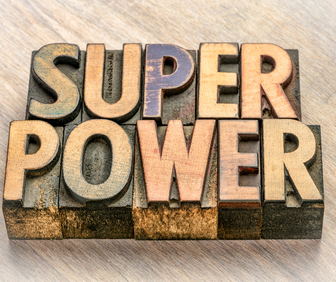
If you do choose to have an actual dialogue, I’m not going to lie–it can be highly triggering having done it many times myself for the character development of unconditional love.
However, for me, once I energetically recovered from the initial conversations…I was proud and had more courage to start another conversation.
I’m always surprised in the end, how we actually share a lot more in common than I realized.
When they don’t become “the other” and dehumanized, I become the fear itself. When I’m able to dismantle the fear, I’m left in a deeper inquiry of what really matters in life and where will I focus?
What will you choose today? And every moment?
To be in fear and contracted or in love and expanded?
Your body won’t lie. Just put your hands on your belly or chest, and despite what your mind may be rattling off, if you have deep breaths–you are grounded.
Now is the time to practice this skill of allowing and accepting fear–to embrace the fear.
Regardless of what happens in the world, you’ll be equipped with an essential 21st Century skill, unconditional love.
THAT is a superpower worth cultivating for years to come!
***
Anna S. Choi helps growing, six-figure earning, overachieving, conscious business leaders–who are exhausted meeting the demands of their day–prevent burnout as they scale their impact. They want to build habits for staying happy, energized, and focused to perform at their optimum given the demands, complexities, and uncontrollable environments that suck up their energy. Learn more at www.annasunchoi.com.
If you are on a path of making a better version of yourself, you can also read other blog posts that I have published HERE. Or you can contact me, and I will be glad to talk to you and discuss how we can improve your situation.
3 Assets Business Leaders Need Today: Lessons Learned from Homeschooling for Business

The continued safety measures made remote working and remote learning the new normal. But now more than ever, we have so much uncertainty and stress to deal with.
Parents are trying to raise and homeschool their children while working a full-time job and taking care of their households. I am not an exception—I have a nine years old, and we started school in the last couple of weeks. That’s how I found so many parallels between being a homeschool parent and teacher while running a full-time business. Here are the three critical assets that I think any business leaders should adapt:
- Being agile
- Unlearning
- Storytelling
1) Being Agile
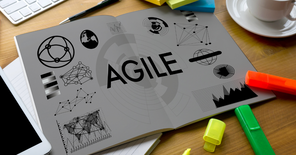
On top of that, with constantly changing variables, you cannot make assumptions when planning ahead. As frustrating as that may be, that’s where you have an opportunity to transform by approaching your business with a beginner’s mind. You are free to innovate rather than cling to past based approaches that no longer work in today’s business environment.
Consider the economic impact of the pandemic has already been made. It’s not that it’s coming, the impact is simply unfolding from what’s already happened. In other words, the next billion dollar companies have already taken off in this climate. We can accept the current reality and catch up or hope the past ways of doing business can return.
You can focus your thinking with the attitude of “what can I create from here?” “What is the opportunity I can take advantage of in this current reality and where we are now headed?”
Let’s take homeschool as an example. Our son was in public school, then he went to private, and now he’s homeschooling. When the pandemic hit, we were forced to homeschool, requiring us to be constantly agile with the changing circumstances.
With both of us remote working at home, there were times we all three needed to be on zoom. To accommodate sound barriers, at one point my husband in the bathroom for a conference call or on the balcony outside. We became agile with creating innovative working environments, by being flexible with our new schedules, creating new responsibilities in managing the house.
Every few days, we’d reflect on what was working or not. We’d be flexible on changing the daily rhythm of our schedule, then adapt from there. We couldn’t plan too far in advance without having tested what worked and iterating from there.
How do you stay agile while also planning ahead?
The Importance of Planning
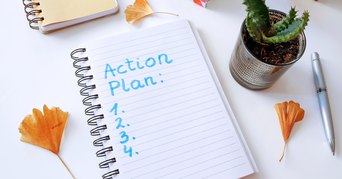
Think of time as a spectrum. In the beginning, it is “let’s see what sticks.” The experimentation phase (that we all faced at the beginning of pandemics, within our businesses, our lives, and in homeschooling) has to happen. Then you start to see patterns settle. The variables begin to get smaller. With fewer variables, you can now start to plan further out.
Still, your planning should be adapted to the new reality and should be different from what was done pre-pandemic. You have to choose to plan and commit to that plan in a very rough time-frame and then adapt from there.
There is a constant battle of how much planning is too much, and you have to find that balance for yourself. The fastest way to find balance is by experimenting. Instead of sitting and thinking, “Is this too much?” “Is this too little?” –just do it! Just start planning, and as you go, you can correct your actions accordingly.
Companies with an agile culture can more easily embrace and adapt to change, can turn uncertainty into opportunity, and grow while other businesses fail. At its core, being agile is all about expecting and managing change. Change is inevitable, and being agile is a method for flowing with change, rather than resisting it.
2. Unlearning
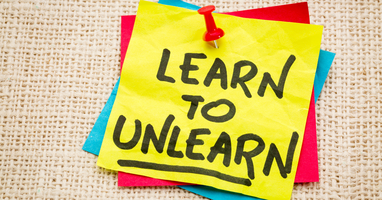
In home schooling, there are many unspoken rules like no school on weekends, a 5-7 hour school day, sitting down and working on memorizing knowledge you may or may not use later on, and so on.
The same thing applies to business. Unspoken norms are to work 40 hours a week, to sit down all day (if you have that type of business), work 8 hours in a row with just a lunch break, etc.
You must unlearn these norms to create what actually works. Notice when you act from what you should do versus what is doing right for you.
So, as far as unlearning, simply notice your patterns of thinking that restrict you. Now, is the perfect time in your business to see those patterns that limit you and release them.
As an art student, I remember drawing a wall, and the art teacher asked us what colors the bricks were, and we all agreed the bricks were red. But the teacher disagreed. And he made us look through a whole, and we were shocked- the bricks were not red but purple. Astonishing! The color was in front of us, but we couldn’t see the reality because of our pre-existing patterns and beliefs that we saw through.
The same applies to our lives and business. By unlearning pre-conceived rules of the business, you’ll begin to see innovative ways to serve clients and create new services right in front of you. Simply notice the pattern of your preconceptions that limit you. Once you’re aware of the unwanted behavior, you can release it and operate in a different world.
3. Storytelling

Let me give you an example. For homeschooling, if I tell my son: “Do your homework!” or “Come here, and finish this lesson now!” is he inspired to take the action? Unlikely! But if I start reading a story about the lesson, he naturally stops what he’s doing and listens attentively.
Research shows that messages delivered as stories can be up to 22 times more memorable than just facts.
Why is that? Consider storytelling engages all of our five senses. Stories help the brain relax as you are whisked away into another world.
Stories are easy to digest and remember when sharing other people. This increases customer referrals. Stories create more memorable marketing messages. It evokes not just the prefrontal cortex of the brain, but the limbic system or “feeling brain.”
In Conclusion
1) Being agile. Plan with flexibility and adaptability.
2) Unlearning. Pay attention to your patterns that impede your growth
3) Storytelling. Evoke all 5 senses to create a memorable experience people can share.
By utilizing these three critical assets for today’s business leader, you’ll better manage the tsunami of chaos by learning to surf the wave. You’ll unleash your brilliance to help others unleash theirs.
***
Anna S. Choi helps growing, six figure earning, over achieving, conscious business leaders–who are exhausted meeting the demands of their day–prevent burnout as they scale their impact. They want to build habits for staying happy, energized, and focused to perform at their optimum given the demands, complexities, and uncontrollable environments that suck up their energy. Learn more at www.annasunchoi.com.
If you are on a path of making a better version of yourself, you can also read other blog posts that I have published HERE. Or you can contact me, and I will be glad to talk to you and discuss how we can improve your situation.
Resources:
https://www.quantifiedcommunications.com/blog/storytelling-22-times-more-memorable
Focus on Managing your Energy, Not Maximizing Productivity
While the world may pull you in many directions and introduce distractions, how can you cut through the noise to stay focused on taking action on what truly matters for you?
Forget time management. It’s about managing your energy — not your time.
How do you master your energy? Here’s a simple exercise to get started:
1. First, get clear on the current reality of your energy patterns.
Download a free app like Toggl where you can track activities offline from one activity to the next. At the end of each activity, your job is simply to record whatever activity you were doing. Be neutral and notice if you are judging yourself. Another free app is RescueTime. Once set up, RescueTime will track all the places you visit online in the course of your day. In my experience, the combo of Toggle and Rescuetime gives you the most accurate snapshot of the activities you’re investing your energy into.
It can take one or two days to get used to tracking each activity. Initially, you may find it too hard to enter each activity as you do it. Just try experimenting and see if you can get into a rhythm where, at the end of each activity, you click stop activity and start again — this forces you to then determine what you’ll now be focusing on. If you can persevere through the learning curve that comes with activity tracking, it’s worth the insight gained.
If you have any resistance to tracking using the apps, you can always journal your main activities throughout the day or use a Microsoft Excel sheet to track every thirty minutes with a timer. While manual tracking tends to not be as accurate to reality, any method will do as long as it fulfills the purpose of the exercise to track your activities for a set number of days.
Many of my clients expressed how, in just a few days of tracking their activities, they are more present and able to stay focused in their business and in life. See if you can do it for seven days in a row. I think you’ll be surprised even after two to three days of tracking what you’ll discover.
2. Next, reflect on your energy patterns.
What activities drained you? Which activities energized you? Put a minus sign by activities that were draining and a plus sign by activities that gave you more energy. Notice if there are any other patterns for your sleep, eating or exercise habits.
Sleep is often an area clients struggle with. They can’t sleep deeply, get enough sleep or be consistent with bedtime. Here are some bedtime exercises I recommend by author and mind-body training expert Ilchi Lee that help quiet an overworked brain:
Rollbacks: Sitting down, pull your knees into your chest and roll backward and back up. Focus on massaging your spinal cord. Make sure you have a carpet or mat to cushion your back and be gentle on your neck. Do 10-20 repetitions to warm up your body.
Toe-Tapping: Next, lie down on your back with your legs down and arms by your sides, palms up. Bring your heels together and tap your toes, rotating your entire thigh and leg as you touch your big toes. You’ll generate lots of heat in your legs, bringing all the distracting thoughts in your brain down to your core and legs.
Sleeping Tiger: On your back, raise your legs in the air, making a 90-degree angle with your knees and flex your feet toward you. Lift your arms in front of you, flexing your wrists, so your palms face the sky.
Picture the soles of your feet and palms of your hands like an energy antenna, feeling around for energy until you can find a relaxing place. With each breath, imagine breathing through the soles of your feet and palms of your hand, accumulating hot energy into your core. Hold still in this position for one to two minutes at first, focusing on slowly inhaling and exhaling like a balloon. Eventually, you can gradually build up to holding this position for 10 or even 20 minutes. All of these exercises are like taking an energy shower at the end of the day, clearing your brain of all its thoughts and to-do’s, relaxing the mind and integrating your brain with your body before bed.
3. Write down any learnings, awakenings and observations in your journal.
You’ll naturally discover insights into how easily distractible you are, how much of your day is dictated by your environment or how you have very little rest built into your day. You take it to another level when you capture what you’ve learned on paper. This helps your brain solidify what is being learned by having to articulate your thoughts, then integrate that thought with writing on a page. Now you’re meaningfully connecting your mind and body.
From your learnings, choose at least one new energy habit to experiment with, such as going to bed earlier, creating a grounding morning ritual or moving your body for one minute each time you get up to go to the bathroom. Then, track your new energy habit.
Utilize a bullet journal method of drawing shapes and coloring them in when habits are completed. Or simply write the habit out on a piece of paper, put the days of the week across the top, and mark an “x” for each day you complete the habit.
Business leaders manage what they measure and measure what matters. When you take the time to build new energy habits, you can more effectively manage your energy day to day. Focusing solely on productivity and efficiency at all costs is not as relevant in today’s times, as it fails to integrate the whole human. When you manage your energy — instead of time — you start treating yourself as a whole human being. You become more conscious, more present and focused on a more fulfilling journey.
This article was originally published in Forbes.com
***
Anna S. Choi helps growing, six figure earning, over achieving, conscious business leaders–who are exhausted meeting the demands of their day–prevent burnout as they scale their impact. They want to build habits for staying happy, energized, and focused to perform at their optimum given the demands, complexities, and uncontrollable environments that suck up their energy. Learn more at www.annasunchoi.com.
How to Find Peace in Chaos
What if you could find peace in any chaos?
Day to day, you might deal with many triggers to your survival brain, unleashing a host of emotions, thoughts and body sensations each minute that can feel chaotic or out of control.
What does chaos look like to you?
Is it getting stressed scrolling through social media streams on conflict-ridden current events? Getting constantly interrupted by your kids on a video call while sharing space with your partner who is also working from home? Or trying to make many decisions in the face of the unknown?
Chaos often shows up internally. Maybe it’s a dull, throbbing headache, stiff neck or tight back. Or maybe it’s your constantly running mind that never shuts up, analyzing what happened or what needs to get done the next day right before bedtime.
It may be impractical to take time off for a 10-day silent retreat or meditate for an hour, let alone 15 minutes.
Here are three quick, simple ways to find peace in chaos in any moment:
Moving Meditations
We often focus on exercising our muscles, but what about our organs?
With your legs shoulder-width apart, gently use your fists to tap two inches below your belly button, and imagine the vibration going into your core or “gut.” This is a major energy center in your body where life is birthed, and it is also known by some as the second chakra.
Close your eyes, and relax your mind. Focus your awareness where the vibration is on your energy center.
Where your mind goes, energy flows. Energy travels as light, sound or vibration. This exercise utilizes vibration to help bring your awareness back into your body’s core and center.
After 100 or so taps with your fist, now suck your belly button in to your spine, similar to a crunch standing or sitting up. Keep pumping. This is called intestinal exercise.
Now that you’ve used vibration through tapping, you’ve brought your brain’s scattered energy from outside yourself back into your body, drawing downward to your gut. Intestinal exercise helps you keep your focus centered on the gut and heat up your core.
Typically, we have hot heads and cold guts. By reversing this improper circulation using the “water up, fire down” principle, you can bring the “fire” in your head down to heat up your core, and bring the cold gut energy back up to your head for a calm, cool mind.
By exercising your intestines, you’re pumping fresh oxygen, increasing blood flow, better absorbing nutrients and processing undigested waste to achieve the proper “water up, fire down” circulation. You’ll know you have proper energy circulation if you heat up, sweat or form saliva in your mouth.
Master Your Emotions
Other exercises can really allow you to master your emotions by embracing the “bad” or unwanted emotions like anger, sadness or jealousy.
This practice takes five minutes or less and keeps your focus on observing the emotion rather than becoming or identifying as the emotion itself. There are many exercises, but here’s a sample of one exercise that has proven very powerful with my business leader clients.
Close your eyes. Scan your body from your head to your toes. Where do you notice tension, pain or unwanted emotions?
Ask yourself, “What color is the pain or unwanted emotion? What shape? What texture? What movement?”
Now imagine one of your happiest memories. Who’s around you? Where are you? What songs and smells surround you? How does it feel?
Saturate every cell in your body with the energy of that happy memory.
Now go back to the pain. Ask yourself, “What color is the pain now? What shape? What texture? What movement?”
My clients who practice this are able to shift their unwanted feeling’s shape, color, movement — sometimes disappearing the unwanted emotion altogether.
The more you master your emotions, the quicker you’ll be able to develop your emotional resilience as a leader.
Listen Within
The final exercise to access peace in chaos is listening within.
Simply close your eyes, take a few deep breaths and ask your heart, “What’s my message for today?”
Continue asking and listening. Often, the response is simple in just a few words.
You can not only talk to your heart, but any organ, or area of pain, as well.
By tapping into your own inner wisdom to listen within, you’ll get very aligned answers to decisions you need to make without having to question or regret the decision.
The more you practice, the easier your body and heart can communicate clearer messages, and the more power you’ll have to simply notice your thoughts, feelings and body sensations passing through, rather than getting lost in them.
Mastery Requires Practice
Before you can experience peace, it’s critical to bring your awareness from outside yourself into your body. Then bring that energy down from your head into your core. You’ve now aligned your body, heart, mind and soul in just a few minutes.
By focusing inward, you’ll build your inner guidance system more strongly to guide you through uncertainty. You’ll be the calm in the eye of the storm, no matter how chaotic it gets inside or out. You can choose the most aligned response each moment.
When you have the courage to practice these moments of peace of moving meditations, mastering your emotions and listening within, you will not only find peace amid chaos; you will become a source of peace in the chaos of our world.
By embodying peace in any chaos, you can access an abundant, infinite supply of energy to serve your team, your customers, your stakeholders and, most importantly, yourself.
This article was originally published on Forbes.com here.
***
Anna S. Choi helps growing, six figure earning, over achieving, conscious business leaders–who are exhausted meeting the demands of their day–prevent burnout as they scale their impact. They want to build habits for staying happy, energized, and focused to perform at their optimum given the demands, complexities, and uncontrollable environments that suck up their energy. Learn more at www.annasunchoi.com.
3 Secrets to Experience Time Freedom Every Day in your Business
Does vacation ever feel like more work — where you need a vacation from the vacation?
Many of my clients share how what vacation provides is more about the experience vacation represents: being relaxed, peaceful and free of pending deadlines, mounting pressures, expectations or responsibilities.
In other words, time freedom: the ability to do whatever you feel like doing, whenever you want, with no consequences.
Here are three time-tested ways you can create time freedom every day.
1. Create a morning ritual.
What’s the one thing that nourishes your soul each day?
Consider that the first half hour when you wake up is the most critical time to train your brain toward nourishing habits in that half-conscious state where your brain is transitioning from theta to alpha waves.
Pick a moving meditation or mindful exercise that will purify all the stress, toxins and tension from the inside out. Start with just a seven-day challenge to do that one thing each day, track your progress and write down what you notice and observe in your body as a result.
Avoid picking something you want to fix about yourself or that you “should” do.
If you find value at the end of seven days, I recommend continuing your journey to 14 or 21 days, whichever is more motivating. If you found no difference after seven days, pick another one thing that nourishes your soul each morning.
After 21 days, you can take a break and pick one new thing that nourishes your soul — or continue to 49 days, then up to 100 days.
Know that if you skip a day, you start over. No judgment, no attachment. Just start over. You must do it consecutively to truly experience the change and be able to effectively evaluate whether or not to continue at the end of your challenge period.
Doing so will allow you to stop reacting to your head chatter, judgments, doubts and other emotions. Instead, you’ll cultivate experiencing calm during the chaos of the unknown and unpredictable.
2. Create a midday ritual.
Lunchtime is a very easy, natural time for us to take a break to nourish ourselves. If possible, try to go outside in nature to experience being part of the greater whole.
Being outside lets us connect with ourselves on a deeper level, allowing us to remember experientially that our problems are small compared to what the entire cosmos is up to.
Here’s what I recommend as a guideline to create your most effective lunchtime ritual, one that will make a world of difference, even if your ritual is just 10 minutes long:
• If possible, leave your phone at your desk so you won’t get interrupted by incoming calls or notifications.
• Experience gratitude looking at your food. Reflect how the sun helped grow the plants, which then grew from the earth, which then got harvested from humans and packaged, shipped and delivered to your local grocery store so you could conveniently eat this meal right now in a short period of time.
• Chew slowly (ideally 30 times), and mindfully pay attention to your five senses.
• Enjoy breathing and being alive.
• In short, do nothing. Just be.
I’m continuously surprised by how 10 minutes of rejuvenation allows me to have relaxed concentration and experience time freedom for the rest of my day.
3. Create a bedtime ritual.
Pick at least one thing you can do every night that has you going to bed with a smile or connected to your heart, or that can create a really good dream. Like the first 30 minutes of your day, the last 30 minutes are equally as crucial to programming your subconscious mind.
This is your time to design your life intentionally rather than by default, watching the news, answering emails or getting work done. It’s no surprise business owners can’t shut their brains off right before bed or first thing in the morning. You are the one training your brain that way. Give yourself time to transition again from the beta wave state of your brain to lower levels to ensure your body can rest deeply and reset for the next day.
Here are some ideas for bedtime rituals:
• As a family, share “acknowledgments” for each other and yourselves. Have each family member take a turn. This practice does wonders for feeling connected and managing emotions. Be sure to also include in your acknowledgment ways of being. For example: “Son, I acknowledge you for being joyful and light, especially in the way you helped your friend stay positive at camp today.”
• Read a soul-nourishing book.
• Toe tap. This acts like an energy shower to cleanse your emotions and thoughts from the day. Simply lay on your back in bed and tap your toes together, with your pinky toes tapping the bed 100 to 500 times while taking deep breaths in and out like a balloon. Doing so allows you to shift all the hot energy accumulated in your brain down to your feet and legs from the oxygen flow and blood circulation — allowing your brain to drift into a more relaxed state.
In Summary
Creating a simple, rejuvenating ritual each morning, midday and night creates microcosms of time freedom, relaxation and peace. Ten mindful minutes three times a day will go far and have lasting effects on the quality of your day-to-day life.
The key to growing your business starts with investing in your mind, body and spirit first. Intentionally creating the vacation experience of time freedom allows you to be in flow for your day, balancing your ego-based “I am my accomplishments” self with the self that simply is perfect the way it is.
This article was originally published on Forbes.com

